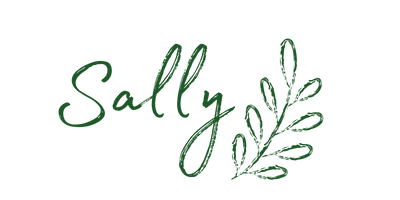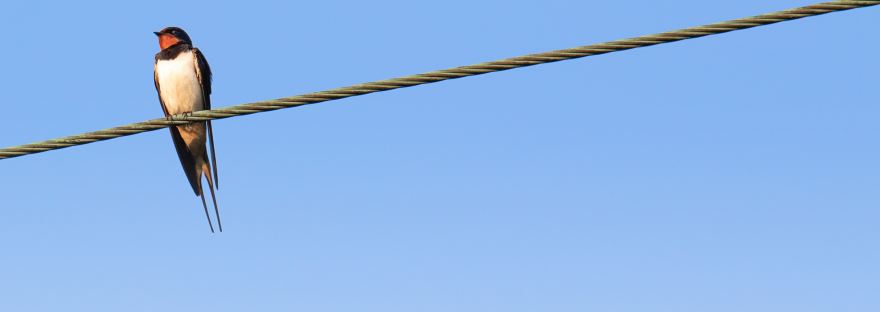The last few months have thrown some difficult challenges my way, including one of my worst nightmares coming true.
The worst thing about your worst nightmare suddenly coming true is that time doesn’t stop and let you catch your breath.
You have to somehow carry on, and face each new day and the turmoil that comes with it. You may have to support others even as you grapple with your own pain and loss.
I wanted to write about what has been getting me through the most difficult thing I have ever had to face. The reason that I can come up for air, even though the worst is still to come. Nature, and my connection with it, has been a lifeline.
On the day I received life-destroying news, I escaped outdoors, not sure of my intention. I just followed the instinct to be in a natural space, to not be cornered by four walls.
I ended up sitting on a bench next to a garden filled with bird feeders facing two bare willow trees leaning over a reen.
As I sat seared with shock, fear, grief and heartbreak, I became transfixed by the birds. They crowded the trees opposite, queuing to visit the bird feeders behind me.
Great tits, blue tits, chaffinches, house sparrows, and goldfinches. A great spotted woodpecker flitted through the upper branches alongside a little egret perched nonchalantly.
Those birds were points of light in the darkness.
Nature writer Melissa Harrison has described nature as scaffolding. A structure we can hold onto as we navigate life and its challenges. There is comfort we can draw from the predictability of the changing seasons. When everything is chaos, nature holds fast.
(I highly recommend Harrison’s book The Stubborn Light of Things, she mentions the scaffolding metaphor in an exclusive podcast accompanying the audiobook).
Nature doesn’t fix most problems and it doesn’t cure mental illness. But it does somehow make the darkness bearable. It is able to show us the wonder and adaptability of life and that, I find, is something to cling to.
As I processed, the dark grey bitter cold of February seemed to echo my emotions. But red kites filled the skies. Like old friends, they helped ground me.
Winter evenings brought barn owl sightings. I hadn’t seen a barn owl for years. Quartering over fields like a ghost. It was spellbinding.
I have moved back to my family home, temporarily. It sits on the edge of a hamlet on the Cambridgeshire/Northamptonshire border.
Over the past few years, I’ve had a complex relationship with the surrounding countryside. It is an agrarian landscape dominated by huge toxic chemical-covered fields mostly devoid of life.
There is an ancient woodland, less than a mile from our house, where I spent a childhood exploring on horseback. It is now fenced off and accessible only to guests staying in expensive holiday cottages.
The avenues of towering poplars that defined the horizons of my childhood are gone along with many mature oaks that once reigned over the hedgerows.
But there are wild oases dotted across the green desert connected by hedgerows. Our home is one.
Our front garden is framed by dense yew and beech hedges, within them an ivy-coated birch surging up to the sky. It is overshadowed by the immense crown of an old horse chestnut tree.
There is a pond surrounded by my dad’s eclectic mix of plant pots, flowerbeds and miniature maple trees.
The back garden, bordered with a mixed hedge, ash trees and more birch trees, leads to a former orchard, now home to chickens and a jungle of bramble.
In front of the kitchen window, there is a birch adorned with bird feeders which are always a hotspot of activity.
Our house and garden are ringed by livestock fields that do welcome wildlife. Some of the paddocks are currently overflowing with daffodils. Tall mature trees scattered across the fields are home to birds of prey.
I am surrounded by a healing buzz of life here in this oasis. From dawn until dusk runs a soundtrack of birdsong. Trilling tits, raucous robins, pigeon coos and thrush melodies, occasionally punctuated by the wheeze of a greenfinch.
Rabbits bounce through fresh green tussocks of grass. When spring sunshine appears, queen bumblebees whizz by. The year’s first butterflies catch the eye, brimstone, small tortoiseshell, peacock and even a common blue. Blackthorn blossom and cowslips decorate the hedgerows and verges.
Nights here are blissfully dark and quiet, interrupted only by the hoots of tawny owls and the odd distant fox cry.
I know I am so privileged to have this. It is of great sadness to me that so many do not or cannot tap into this connection with nature that sustains me.
Even my outdoorsy partner who grew up in Suffolk had to visit Norway’s rugged northern coastline to get the same spiritual reaction I sometimes have watching blue tits.
Being neurodivergent is a mixed bag. But I am grateful for my sensitivity if it means I am attuned to nature in a way that can make me still feel alive when everything is bleak.
There is an element of this connection that is almost instinctual. A few days ago when out walking the dog, I was focused on him and the landscape ahead.
Something made me look up without thinking and I was rewarded with the sight of two swallows perched on the telephone wire above my head.
I could see their delicate needle-sharp tails, their pinky-red chins and the glossy blue/black of their heads and wings. It was a thrill to see the first swallows of the year. I cherish moments like that.
The ability to connect with nature is built into all of us. We are part of nature. But it is not automatic, at least not while we continue to cut ourselves off from it.
Despite my rural upbringing, it wasn’t until I left the countryside behind that I began to build this lifeline that I now depend on.
Nature is able to thrive anywhere if we let it and so can our connection with it. Our cities and towns are often home to more wildlife than the countryside.
One of my most awe-inspiring wildlife experiences was watching a starling murmuration above a car park. Street trees and weeds bursting through pavement cracks give me quiet joy.
That said, my sensitive soul is battered and exhausted by the manmade noise and clutter of suburbia where I live in Cardiff. At my family home during spring, I am so immersed in nature that I feel part of it. The experience is almost passive and that has been restorative for me.
It is helping me live in the moment and look forward to the small joys each day brings. And I need that now more than ever.

You can also follow my writing by subscribing to my Substack email newsletter ‘Wild Wonderings’ or follow me on Medium.
Does nature help you get through difficult times? What spring sights are bringing you joy?



I like this and feel the same way: “Being neurodivergent is a mixed bag. But I am grateful for my sensitivity if it means I am attuned to nature in a way that can make me still feel alive when everything is bleak.”
I also seem to be able to catch moments in nature around me by looking at just the right moment – some kind of sixth sense, that we have yet to understand.
Cheers for this post, Sally!
J
LikeLike